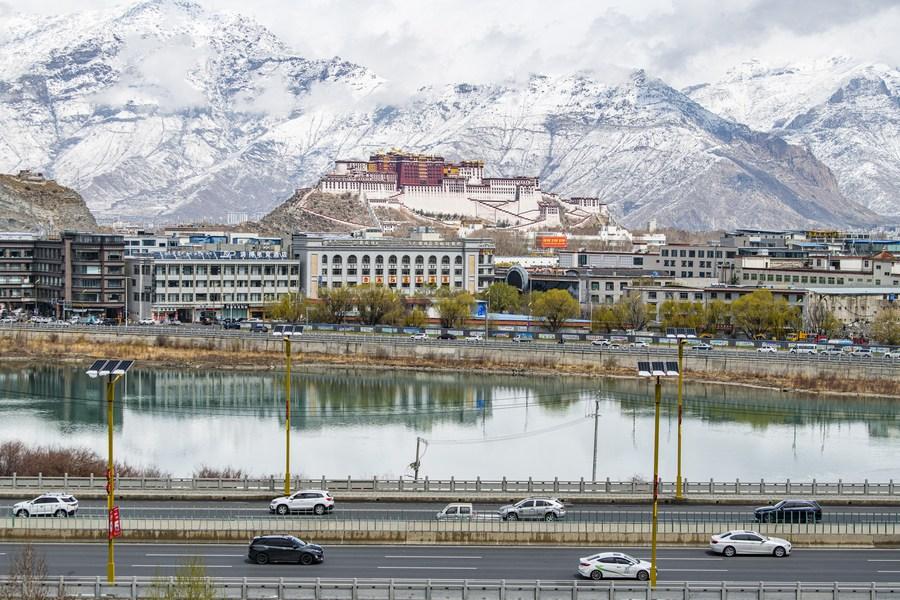Tibetologists praise Xizang's progress in human rights
 0 Comment(s)
0 Comment(s) Print
Print E-mail Xinhua, November 22, 2023
E-mail Xinhua, November 22, 2023

This photo taken on March 30, 2023 shows the scenery of Potala Palace after snow in Lhasa, southwest China's Xizang Autonomous Region, March 30, 2023. [Photo/Xinhua]
Zhang Yun, a scholar who has engaged in Tibetology research for about four decades, said that he has witnessed the significant progress in human rights development in southwest China's Xizang Autonomous Region.
"An unmistakable transformation is the visible enhancement in the quality of life for local residents," said Zhang, a researcher with the China Tibetology Research Center (CTRC).
Recalling his first visit to the region in 1998, Zhang said that most vegetables were transported from other inland provinces and cities, residents were plainly dressed, and the living conditions were not good. However, there has been a dramatic change in the mood, dress and housing conditions of residents in the plateau region over the past decades.
Zhang was among close to 50 tibetologists who took part in a forum held in Beijing Tuesday, focusing on the promotion and interpretation of a white paper titled "CPC Policies on the Governance of Xizang in the New Era: Approach and Achievements."
The document, issued by the State Council Information Office on Nov. 10, highlighted that the Communist Party of China (CPC) guidelines for governing Xizang in the new era have brought about all-round progress and historic success in various undertakings in the region.
During the forum, experts and scholars engaged in multidimensional discussions, offering insights and suggestions on the region's modernization in the new era.
Based on detailed data and abundant facts, the white paper summarizes the comprehensive progress and historic achievements in various fields in Xizang under the guidance of the CPC, said Chen Zongrong, a Party official of the CTRC.
"This unequivocally indicates that the social and economic progress of Xizang epitomizes the nation's outstanding achievements in development, created on the roof of the world through the Chinese path to modernization," Chen noted.
The 2022 GDP of Xizang reached 213.26 billion yuan (about 29.86 billion U.S. dollars), 2.28 times of that in 2012 calculated at constant prices, according to the white paper.
The per-capita disposable income of the region's urban and rural residents as a whole rose to 26,675 yuan in 2022 from 8,568 yuan in 2012, representing the country's highest growth rate for eight consecutive years since 2015, the document said.
"The tremendous achievements in Xizang's economic and social development vividly demonstrate the incomparable superiority of the socialist system. They represent a microcosm of the historic achievements and changes in the cause of the Party and the country," said Zheng Dui, director-general of the CTRC.
Su Faxiang, a professor with Minzu University of China, highlighted that the Tibetan language has been widely used, ancient Tibetan texts and documents have been well protected, cultural heritage preservation has been continuously strengthened, and intangible cultural heritage has effectively been inherited and preserved.
"These efforts have laid a solid cultural foundation for the region's modernization," Su said.
The white paper reveals that China has implemented a series of policies benefiting people's livelihood in Xizang, such as in housing, healthcare, education, ecological conservation and infrastructure development, Zhang said, noting that these policies are long-term, fundamental, and conducive to the region's sustainable, efficient and high-quality development.
"With strong support from the central government, nationwide assistance, and diligent efforts of local residents, Xizang has great prospects for future development," he added.






Go to Forum >>0 Comment(s)